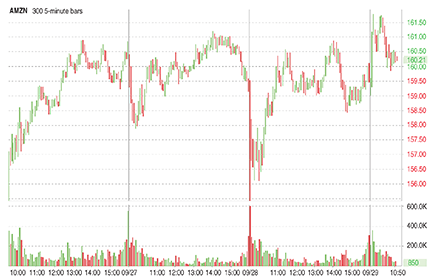REAL WORLD
Maintaining Consistency
Intraday Trading With 100 Shares
With this intraday trading strategy, you can consistently profit with 100-share blocks.
Since the birth of the American stock market, one pattern has always recurred: Major booms follow sharp crashes. The best-known example began on Black Thursday, October 24, 1929, the day when the market started to plummet. During the following three years, across-the-board losses came to almost 90%. In time, however, the numbers began to rise again, and in the end they gained healthy precrash levels.
That phenomenon has repeated several times since, most recently in this millennium’s first decade. The markets broke the 2000 highs in late 2007, and that came after a five-year recovery from the 2002 bottom.
And now, we’re in for it again. The Dow Jones Industrial Average (Djia) has just struggled back up from another historic drop that began in early 2008. That year, among other calamitous events, Bear Stearns put its head on the chopping block and filed for bankruptcy. The market headed south. Later, both novice traders and the public found out why, but the market had changed too fast, and the lessons learned came too late.
So how do we capitalize on these huge drops and seemingly guaranteed recoveries? How can we predict outcomes ahead of time? Is it foolish to even consider? How does an independent daytrader, a beginner or a pro, pick stocks to buy or short? How many shares? And when exactly does he take profit? I guess he could tune into Cnbc and listen to the talking heads... but no. Good luck with that.
There’s no crystal ball
If we all had answers to the golden goose questions, we would be billionaires. All you’d have to do was bet the farm on those answers. For example, since the recent market bottom back in March 2009, the Djia has gained over 5,000 points. If in early 2009 you had put 100% of your portfolio into stocks like Aapl or Amzn, by now you would have been a very happy camper.

Figure 1: intraday volatility. Stocks priced from $100 to $200 are the best stocks to trade intraday. These tend to have more intraday volatility.